There are three principal routes taken by refugees and migrants who cross the Mediterranean Sea in an attempt to reach Europe.
There is the Eastern Mediterranean Route from Turkey to Greece — a route that has been taken by many asylum seekers fleeing violence and instability in Syria, Afghanistan, and Iraq. There is also a Western Route between Morocco or Algeria and Spain, which has been used by Syrian as well as African refugees, although generally in much smaller numbers.
Then there is the Central Mediterranean Route, which leads to Italy. Migrants and refugees who take this route might depart from Algeria, Tunisia, or Egypt, but in recent years the vast majority have departed from Libya.In 2012, at the onset of Libya’s political crisis, there were just over 15,000 documented arrivals in Italy via the Central Mediterranean Route. Last year, according to the United Nations Refugee Agency, there were more than 180,000. Another 4,500 people are known to have died while attempting to cross the central Mediterranean — a fatality rate of about one in 40.
Most of the refugees and migrants who take the Central Mediterranean Route are from African countries including Nigeria, Eritrea, Guinea, and Côte d’Ivoire. Many begin their journeys as economic migrants with the goal of making a better life for themselves, or supporting their families back home.
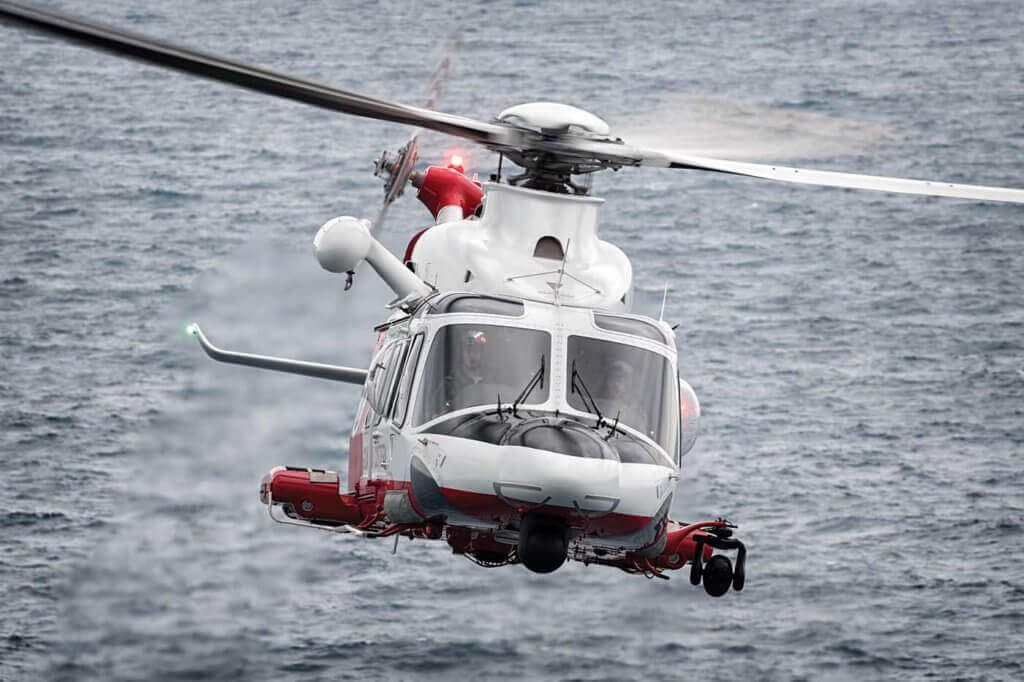
However, the collapse of the Libyan state has been associated with a dramatic increase in human trafficking. According to the International Organization for Migration (IOM), migrants are now typically held hostage upon their arrival in Libya and forced to pay a ransom. Those who can’t pay become involuntary laborers, slaving for their captors for several months to a year.
The risks can be even greater for women. The IOM estimates that 80 percent of Nigerian women who arrive in Italy by sea are victims of sex trafficking. Some young girls are trafficked from the beginning of their journeys; others turn to prostitution when they run out of money. Even women who travel with their husbands can be raped systematically at every stage of their journeys, with many women falling pregnant as a result.
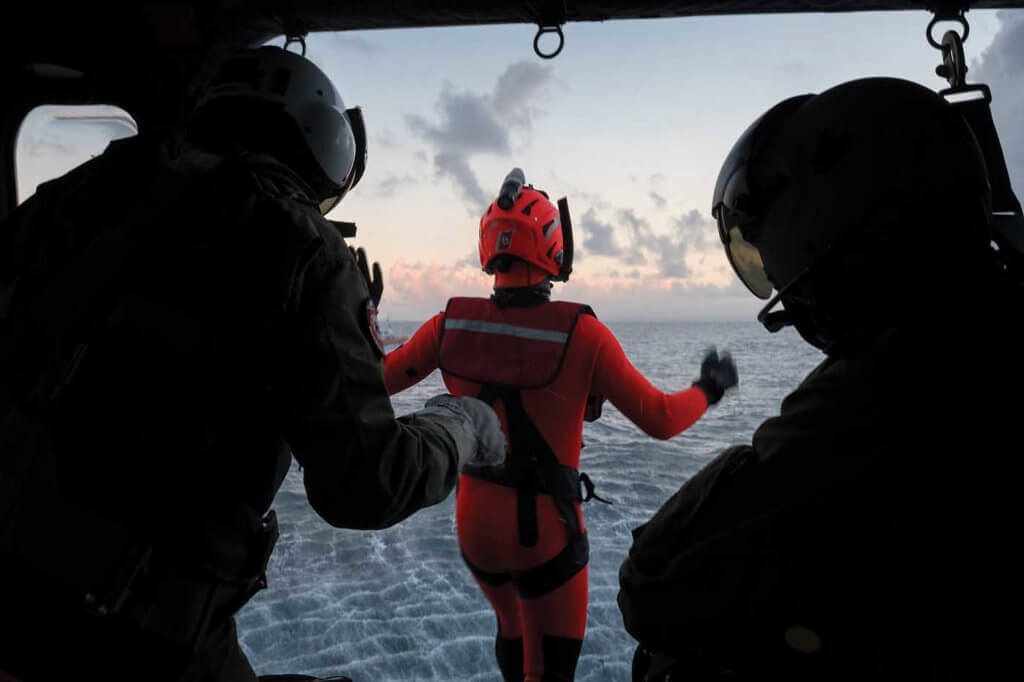
By the time these migrants are packed onto cheap boats on Libya’s northern shores, sometimes at gunpoint, “they have most likely experienced violence, abuse, and torture; [been] sold into slavery in Libya, sometimes multiple times; and lived in a constant state of fear,” the IOM observes. Yet with their embarkation to Italy come new, terrifying risks.
Chief among these is the risk of drowning, with boats frequently capsizing in bad weather or during rescue attempts. But some migrants asphyxiate from breathing engine fumes, or are crushed to death on boats that are massively overloaded. Others suffer chemical burns when gasoline leaks in the boat and mixes with sea water.
The journey across the Mediterranean is thus a uniquely vulnerable time for migrants, even those who have spent a year or more at the mercy of smugglers and traffickers. Yet it is also the point at which the governments and humanitarian organizations of Europe are best positioned to help.

The circumstances that enable human trafficking — political instability, corruption, and a lack of economic opportunities — are big, hard problems that are impossible for any single person to fix. But the straightforward act of saving a life, of aiding another human being in their time of greatest need, is where one person, or one flight crew, can still make a difference.
In the central Mediterranean, one of the organizations making a difference is the Italian Coast Guard, Guardia Costiera, and within it the 2° Nucleo Aereo based in Catania, Sicily. In November of last year, Vertical 911 traveled to Catania to learn how the air unit is managing its role on the front lines of the migrant crisis.
The Aircraft
Catania is located halfway down the east coast of Sicily, the triangular island that sits just off the toe of the boot-shaped Italian mainland. On clear days, the city is dominated by the looming presence of Mount Etna, although this active volcano is so high — climbing from sea level to around 10,920 feet (3,330 meters) — that its top is often shrouded in clouds.
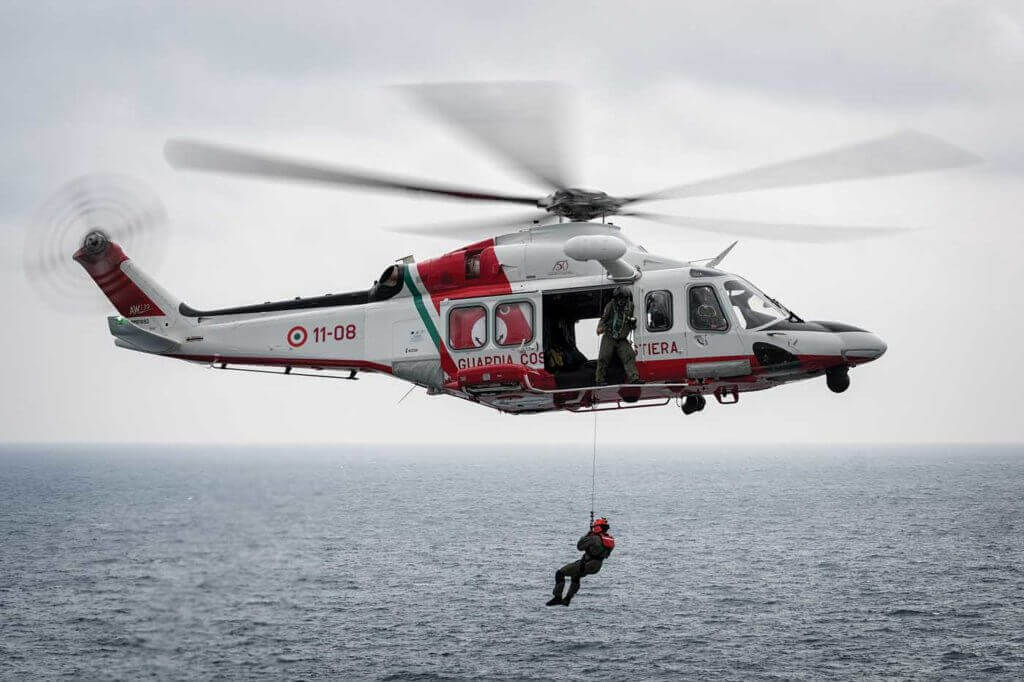
Guardia Costiera has a maritime base at the Port of Catania, near the city’s center. Its 2° Nucleo Aereo is based a short distance southwest of the city at Catania Fontanarossa Airport, a bustling mid-sized airport that sees nearly 8 million passengers per year.
Guardia Costiera commenced aviation operations in the late 1980s, originally with Piaggio P.166 airplanes, later adding the P.180 Avanti II. Today, its primary maritime patrol airplanes are three twin-turboprop ATR 42s, one of which is based in Catania.
The ATR 42s are equipped with radar, an electro-optic/infrared (EO/IR) camera, and other sensors for surveillance and pollution detection, which are operated by two systems operators who sit at a bank of monitors toward the front of the cabin. At the rear are two large bubble windows for visual observation, and each aircraft also has a high-intensity searchlight that aids in search-and-rescue (SAR) missions.

Guardia Costiera’s helicopter operations began in 1993 with the delivery of its first Agusta-Bell 412. Rotorcraft capability quickly became essential to the coast guard, which eventually grew its fleet of 412 helicopters to 10 (one of which was tragically lost in a fatal accident in 2001).
The 412s served admirably in SAR and other missions for many years, but when Guardia Costiera began to renew its fleet in 2010, it opted for the AgustaWestland (now Leonardo Helicopters) AW139. The coast guard has now fully replaced its 412s and last year ordered two additional AW139s, bringing the total AW139 fleet size to 12.
“The AW139 gives us a lot more capabilities for search-and-rescue,” said SAR captain and instructor pilot Giovanni Ligas, who is one of a dozen Guardia Costiera helicopter pilots based in Catania. “We do rescues with the 139 we never could have done before.”
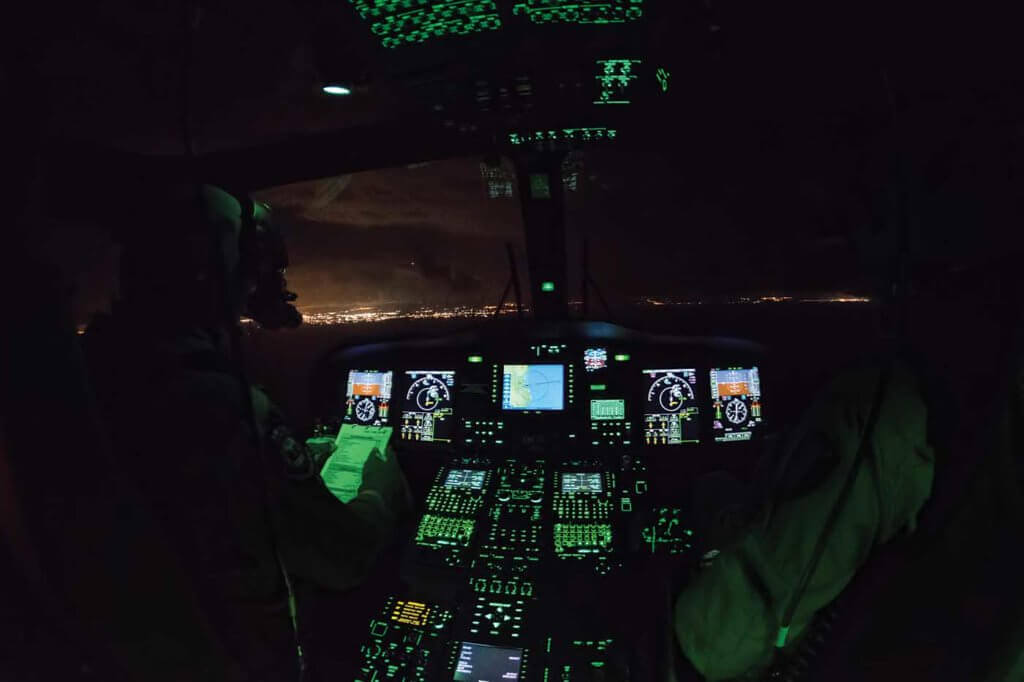
Guardia Costiera’s AW139s are night vision goggle (NVG) capable and have a full suite of mission equipment including search and weather radar, marine band and satellite communication systems, a high-definition forward-looking infrared/low-light TV (FLIR/LLTV) system, optical proximity light detection and ranging (LiDAR) system, and mission console with high-definition displays.
Each aircraft also has an external rescue hoist, cargo hook, new-generation Trakka searchlight, emergency flotation system, and external life rafts. Although the standard AW139 maximum takeoff weight (MTOW) is 6,400 kilograms (14,110 pounds), the coast guard has been able to upgrade some of its aircraft to the optional 6,800 kg (14,990 lbs) MTOW, and its newest aircraft to the latest increased MTOW of 7,000 kg (15,430 lbs).
In addition to the 2° Nucleo Aereo in Catania, Guardia Costiera helicopters are currently stationed at two other bases in Italy. Since the advent of the current migrant crisis, however, the coast guard has shifted more of its resources to the Mediterranean. Fully half of its AW139s are now based in Catania, where one helicopter is always on standby, and several aircraft might be flying at any given time.
Ready for the Call
Guardia Costiera’s helicopters have a basic SAR crew of five: two pilots, a hoist operator, a SAR technician, and a rescue swimmer. For medical evacuations, the aircraft also carry a doctor.
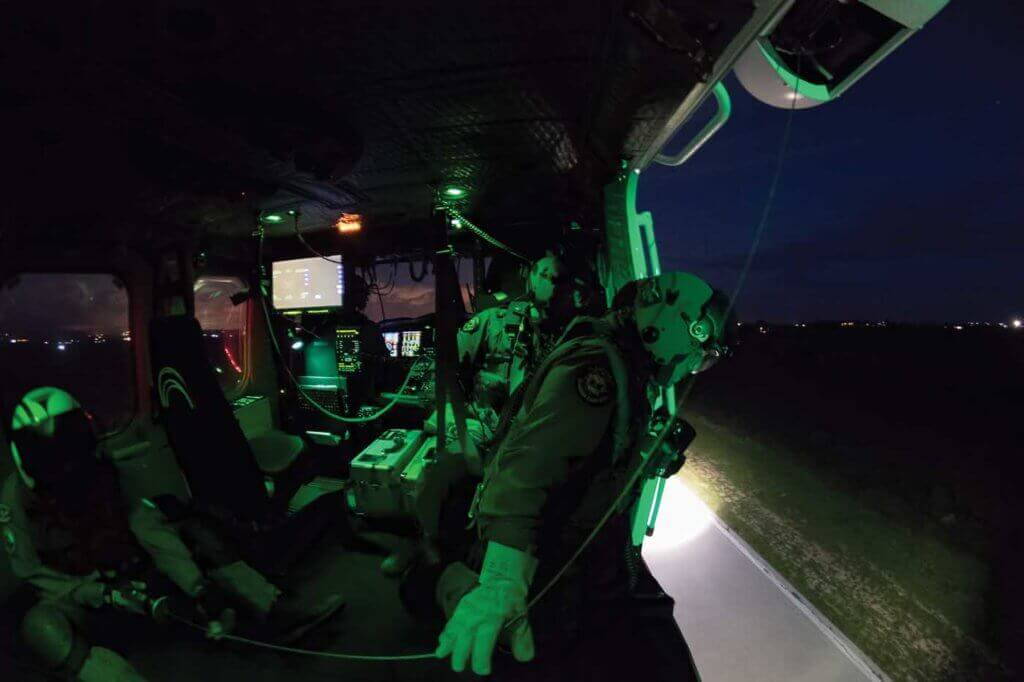
In the central Mediterranean, most migrant rescues are conducted by vessels due to the large numbers of people involved, with the AW139s called into evacuate only the most seriously ill or injured patients. The doctors for these missions are provided by a humanitarian organization, CISOM (Il Corpo italiano di soccorso dell’Ordine di Malta). Although the doctors undergo familiarization training to fly on the helicopters, they are not official members of the Guardia Costiera crews.
Pilots typically accomplish their primary helicopter flight training in the United States through an arrangement with the U.S. military. Then, upon their return to Italy, they undertake an extensive course of ground, simulator, and flight training to transition to the AW139. New pilots gain mission experience by flying second-in-command, gradually working their way up to command pilot status as they gain operational experience.
In addition to the pilots and rear crew, a maintenance specialist often flies with the AW139 on longer missions, or missions away from base. There are 15 maintenance specialists based in Catania, at least two of whom are on duty at any given time. Routine maintenance is performed at the base, with heavy maintenance and more comprehensive inspections handled by Leonardo at its facilities in Rome or Cascina Costa.
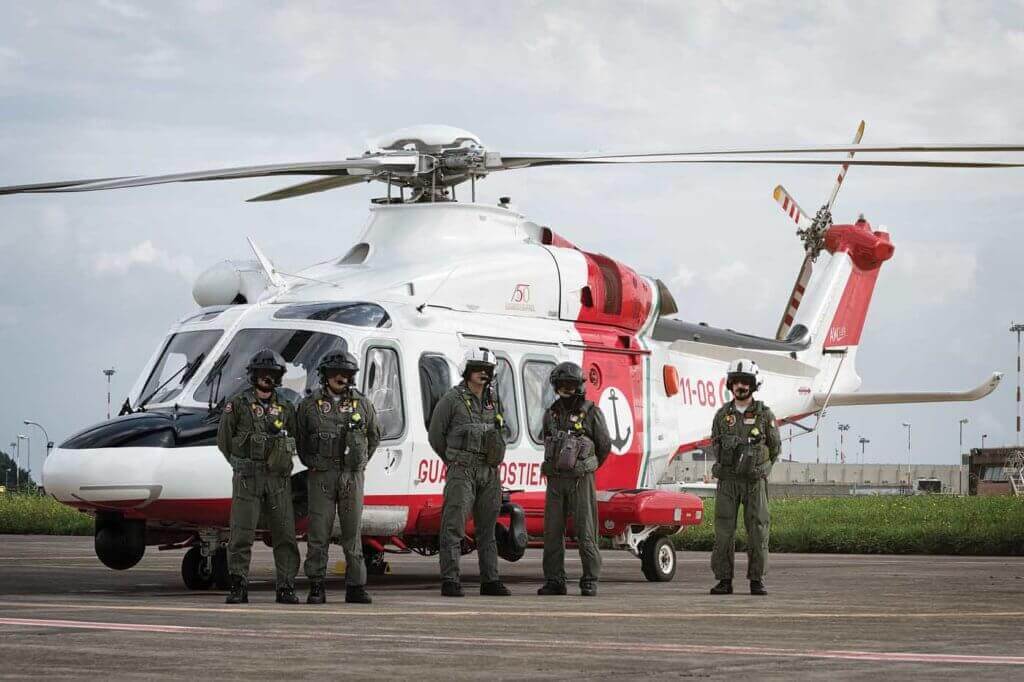
When a vessel is in distress in the waters surrounding Italy, calls for help are directed through the national Maritime Rescue Coordination Center (MRCC) in Rome, or one of 16 Maritime Rescue Sub-Centers (MRSCs), one of which is located in Catania. Typically, requests for air support are coordinated through the MRCC in Rome.
When an air asset from Catania is required, the MRCC sends an order to the commander on duty, who is responsible for assigning a specific crew to the mission. Although one aircraft and crew are on standby at all times, the aircraft schedule changes constantly, so the crews “have to stay flexible,” as pilot Salvatore Provenzano put it.
From the time the call for help comes in, crews can usually be ready to go within 30 minutes, including all flight planning time. Although many medevac missions are relatively routine, crews must be prepared for anything — because the most difficult call of their careers could come at any time.
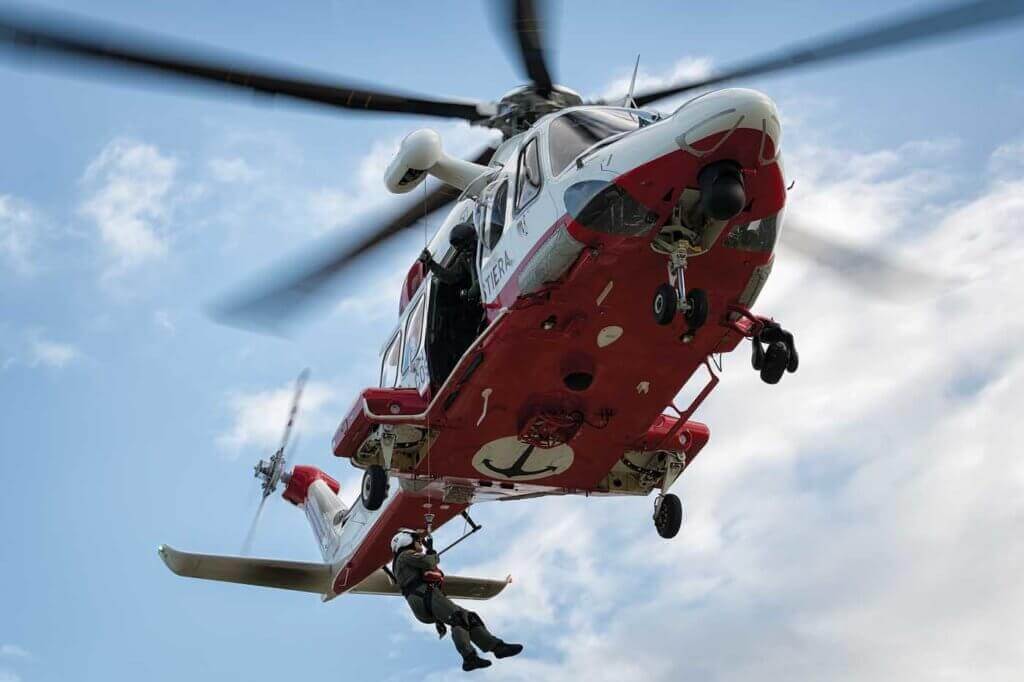
One such call came in the early morning hours of Dec. 28, 2014, when a fire broke out on the car deck of the Norman Atlantic, a passenger ferry with more than 450 passengers and crewmembers on board.
Although the vessel was in Greece’s search-and-rescue region near the island of Corfu when the captain radioed for help, the MRCC in Rome assumed coordination of the rescue operation. Guardia Costiera immediately deployed its available air assets: an ATR 42 from Pescara, in northern Italy, and two AW139 helicopters from Catania (later supplemented by a second ATR 42 and third AW139).
The Italian Navy also responded in force, eventually sending a total of seven helicopters to the Norman Atlantic: five AgustaWestland (now Leonardo) EH101s (AW101s), an NH Industries SH-90, and an Agusta-Bell 212. (A Hellenic Air Force AS332 was also involved for part of the rescue operation.) Immediately, the helicopters that were first on scene began winching people from the Norman Atlantic onto the deck of the Italian ferry Cruise Europa, which was one of the first and largest vessels to arrive at the site of the disaster.
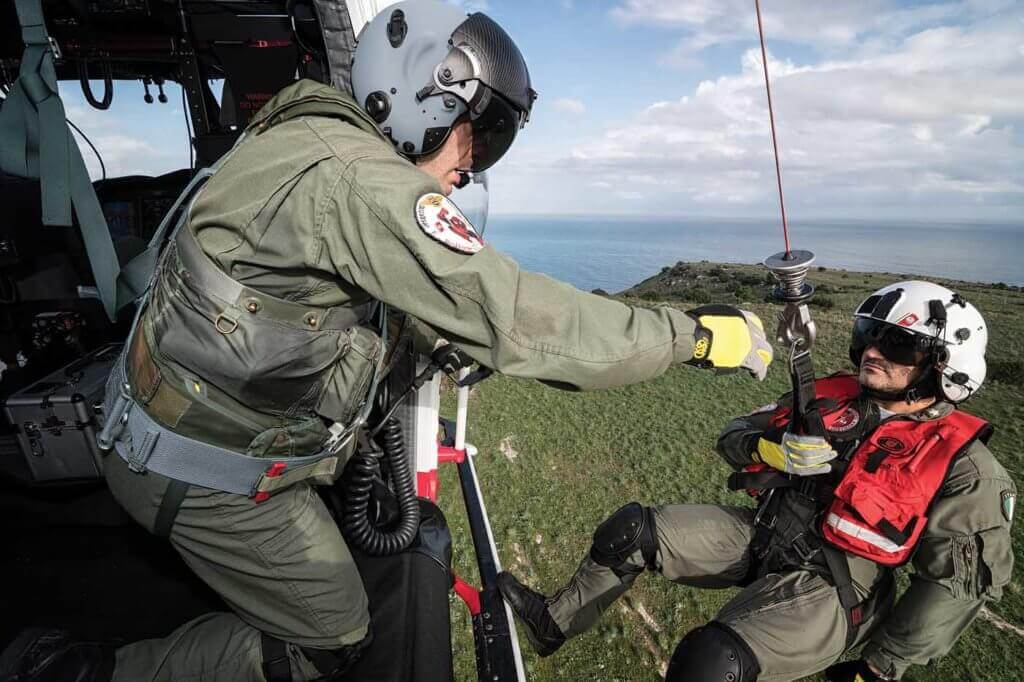
Complicating the already daunting operation was extremely bad weather, including turbulence and winds up to 50 knots, low ceilings, poor visibility exacerbated by smoke from the fire, and a rough sea that caused the Norman Atlantic to drift a substantial distance from its original location. Nevertheless, the Guardia Costiera ATR 42 crews managed to successfully coordinate the diverse helicopters on scene, resulting in one of the largest helicopter rescue operations in history.
“It was very well coordinated with our people,” said pilot Giovanni Ligas, who commanded one of the three participating AW139s. Of the hundreds of Norman Atlantic passengers and crewmembers who were evacuated from the burning vessel, 45 of them were saved by Guardia Costiera helicopter crews, who flew a total of 34 hours in 16 missions over two days. A display at the 2° Nucleo Aereo base in Catania commemorates their extraordinary efforts — an example of the lengths to which these crews are prepared to go at a moment’s notice.
That Others May Live
For migrant rescues Guardia Costiera’s ATR 42 crews provide the same overwatch and coordination services that proved essential during the Norman Atlantic rescue.
Some rescues are initiated when a migrant boat calls for help directly using a satellite phone; others, when a boat is spotted by a nearby vessel. Once an order for air support is received in Catania, an ATR 42 crew will fly to the location of the boat in distress and monitor the situation from the air while coast guard or other vessels come to the boat’s aid.
Guardia Costiera’s ATR 42s are stocked with emergency life rafts that, when necessary, can be dropped from the aircraft using a specially designed slide. However, this option is avoided during migrant rescues unless absolutely necessary — crews are mindful that deploying life rafts could spark panic on the overcrowded boats, potentially leading to more drownings.
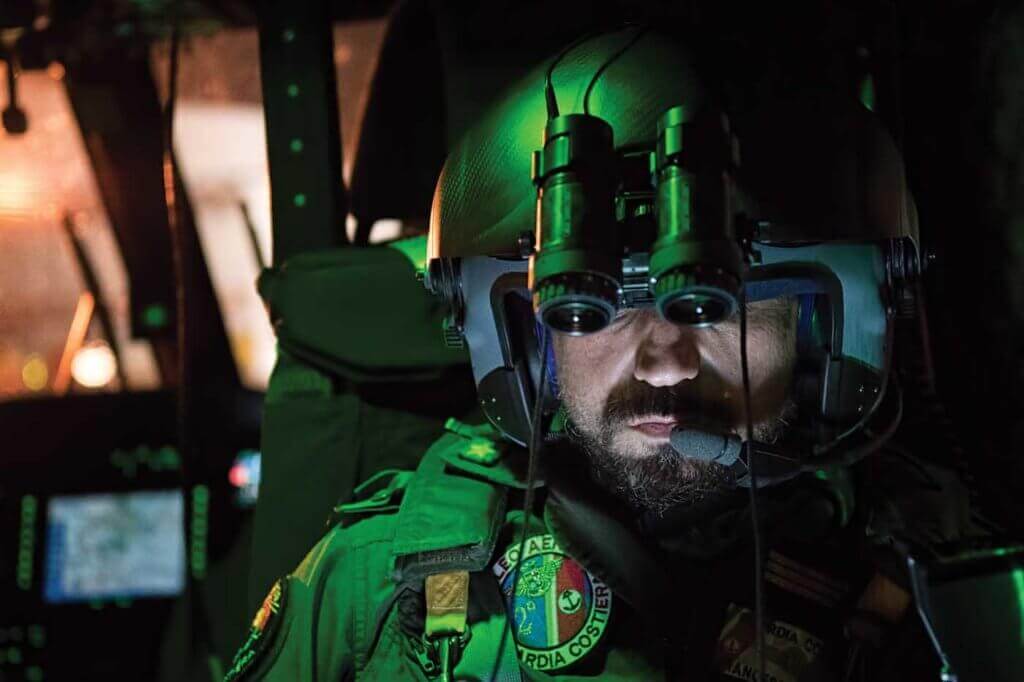
Helicopters are often called to conduct medical evacuations once victims have been transferred onto rescue vessels and found to be in need of critical care. During Vertical 911‘s visit to Catania, an AW139 crew was called out to winch a patient from a coast guard ship that was carrying rescued migrants toward Italy’s southernmost island, Lampedusa. Located about 170 kilometers (105 miles) southwest of Sicily, and only about 110 kilometers (70 miles) from Tunisia, the tiny island of Lampedusa has been a primary point of entry for many African migrants, and the focus of much attention in the current crisis.
Today’s migrant crisis is not the only one in Guardia Costiera’s recent past — in 1991, waves of migrants began arriving in Italy from Albania following the collapse of that country’s communist regime and ensuing economic crisis. Then as now, the coast guard found itself on the front lines of a complex, politically charged situation with no simple or obvious solution.
With conflict in Libya ongoing, it is not clear how the current migrant crisis in the central Mediterranean will be resolved. According to the IOM, more than 24,000 migrants arrived in Italy by sea in the first three months of 2017 — a 23 percent increase compared to the same period in 2016. On a single weekend in April of this year, more than 8,000 migrants were rescued off the Libyan coastline by Guardia Costiera, humanitarian rescue ships, and other vessels.
That’s an overwhelming volume of rescue work for any organization to tackle, and as a relatively small air unit with limited resources, Guardia Costiera’s 2° Nucleo Aereo can only do so much. But whether on a fair-weather medevac mission, or a demanding nighttime rescue in gale-force winds, the unit’s crews approach their daunting work with dedication and professionalism, doing credit to the rescuers’ motto “that others may live.”
off





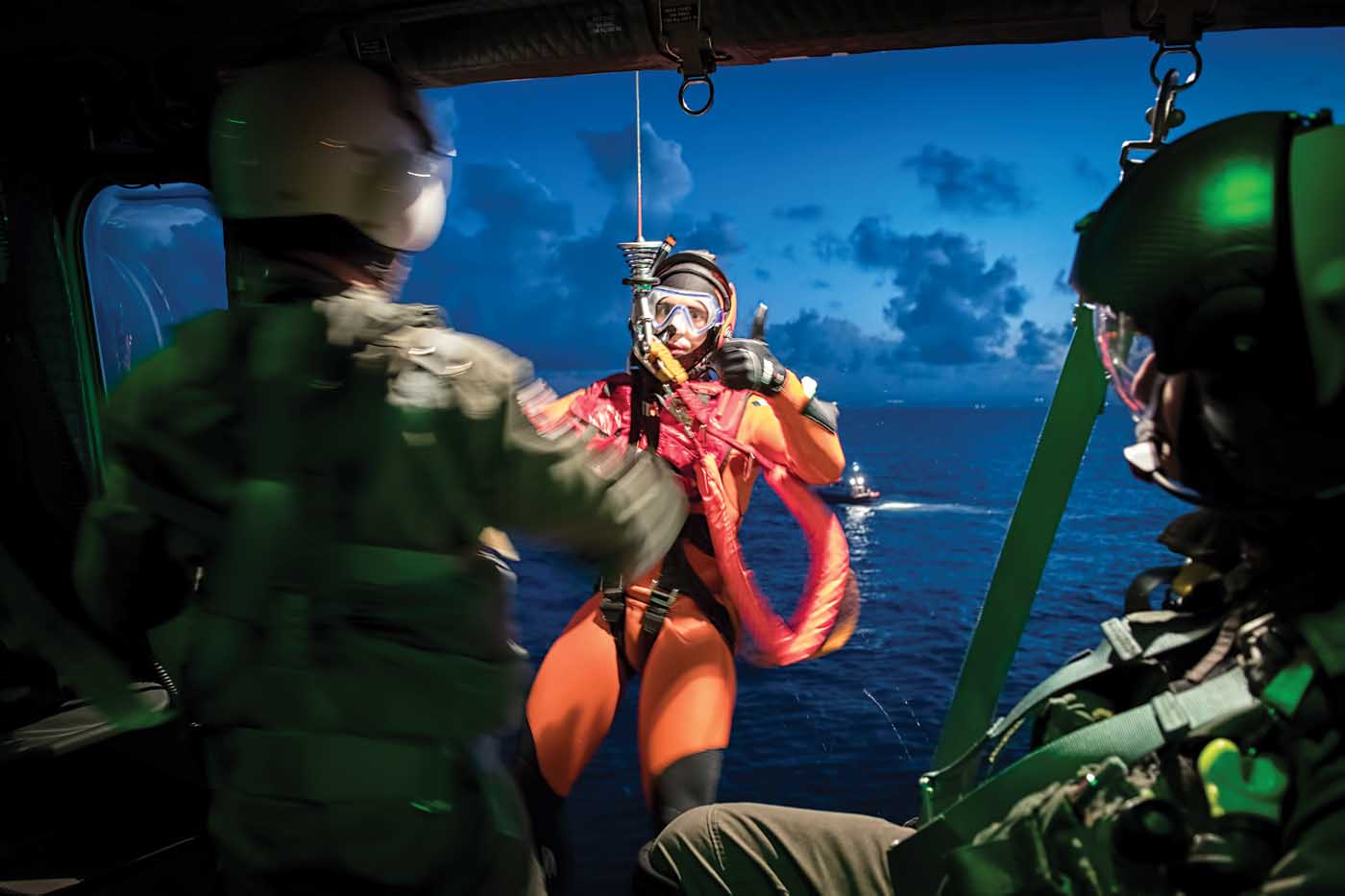
I have read with a great interest this article, well done, catch the attention. Faber